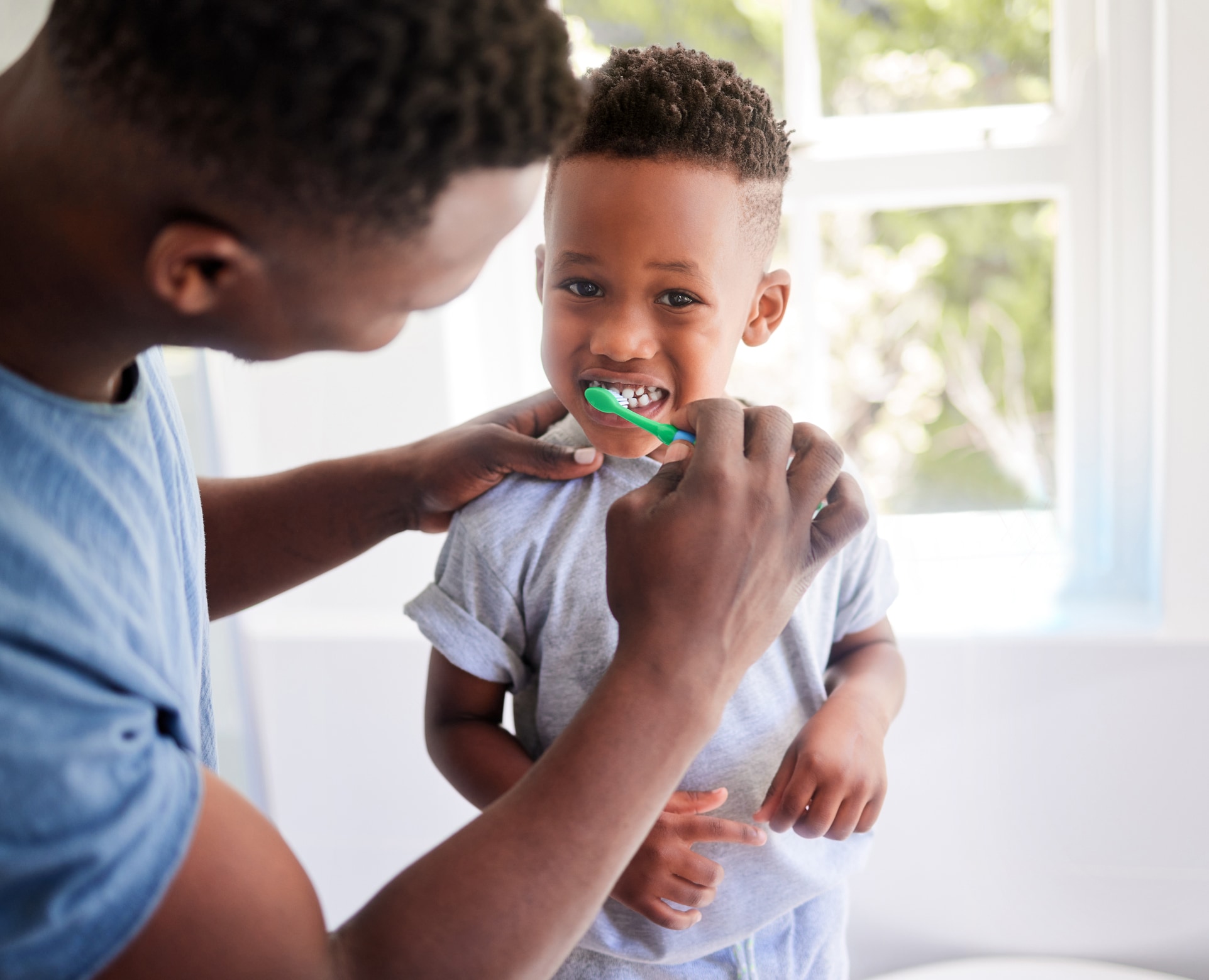What to know
Learn what you can do to prevent cavities in infants and children.

Overview
Cavities (also known as caries or tooth decay) are the most common chronic disease of childhood in the United States.1 More than half of children aged 6 to 8 years have had a cavity in at least one of their baby (primary) teeth. More than half of adolescents aged 12 to 19 years have had a cavity in at least one of their permanent teeth.2
Untreated cavities can cause pain and infections that may lead to problems with eating, speaking, playing, and learning.
The good news is that cavities are preventable. Fluoride varnish can prevent one-third (33%) of cavities in the primary (baby) teeth.3 Children living in communities with fluoridated tap water have fewer cavities than children whose water is not fluoridated.4 Similarly, children who brush daily with fluoride toothpaste will have fewer cavities.5
Dental sealants can also prevent cavities for many years. Applying dental sealants to the back teeth prevents 80% of cavities.6
What Parents and Caregivers Can Do
For Babies
- Wipe gums twice a day with a soft, clean cloth in the morning after the first feeding and right before bed. This wipes away bacteria and sugars that can cause cavities.
- When teeth come in, start brushing twice a day with a soft, small-bristled toothbrush and plain water.
- Visit the dentist by your baby's first birthday to spot signs of problems early.
- Talk to your dentist or doctor about putting fluoride varnish on your child's teeth as soon as the first tooth appears.
For children younger than 2 years, consult first with your doctor or dentist about the use of fluoride toothpaste.
For Children
- Brush their teeth twice a day with fluoride toothpaste.
- Help your child brush their teeth until they have good brushing skills. If your child is younger than 6 years, watch them brush. Make sure they use a pea-sized amount of toothpaste and always spit it out rather than swallow.
- Ask your child's dentist to apply dental sealants when appropriate.
- Drink tap water that contains fluoride.
- Institute for Health Metrics and Evaluation (IHME). GBD Compare Data Visualization. Seattle, WA: IHME, University of Washington. 2020. Accessed October 17, 2023. https://vizhub.healthdata.org/gbd-compare
- Lin M, Griffin SO, Gooch BF, et al. Oral health surveillance report: trends in dental caries and sealants, tooth retention, and edentulism, United States : 1999–2004 to 2011–2016. Centers for Disease Control and Prevention; 2019.
- Marinho VCC, Worthington HV, Walsh T, Clarkson JE. Fluoride varnishes for preventing dental caries in children and adolescents. Cochrane Database Syst Rev. 2013;7:CD002279. DOI: 10.1002/14651858.CD002279.pub2
- Community Preventive Services Task Force. Dental caries (cavities): community water fluoridation. Accessed October 17, 2023. https://www.thecommunityguide.org/findings/dental-caries-cavities-community-water-fluoridationexternal icon
- Marinho VCC, Higgins JPT, Sheiham A, Logan S. Fluoride toothpastes for preventing dental caries in children and adolescents. Cochrane Database Syst Rev. 2003;1:CD002278. DOI: 10.1002/14651858.CD002278
- Ahovuo-Saloranta A, Forss H, Walsh T, Nordblad A, Mäkelä M, Worthington HV. Pit and fissure sealants for preventing dental decay in permanent teeth. Cochrane Database Syst Rev. 2017;7(7):CD001830. doi:10.1002/14651858.CD001830.pub5
